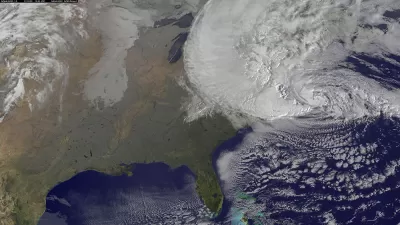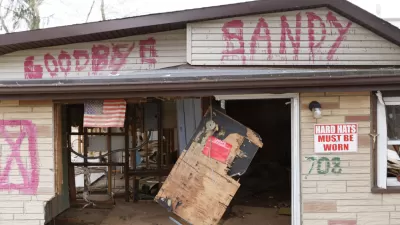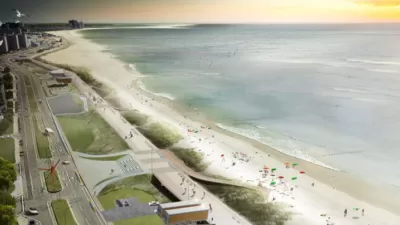A massive infrastructure project is on the table in New York, after the U.S. Army Corps of Engineers released a new feasibility study.

"[T]he U.S. Army Corps of Engineers has proposed several different approaches to preventing flood surges using gates and berms in and around New York Harbor, and environmentalists are sounding the alarm," reports Jonathan Hilburg.
The proposals are part of the New York-New Jersey Harbor and Tributaries Coastal Storm Risk Management Feasibility Study, a 2,150-mile survey of the region’s most vulnerable areas. The Corps has put together five schemes—four that use storm barriers, and one “as is” projection—and is soliciting feedback from New York and New Jersey residents with a series of information sessions this week.
As noted by Hilburg, the project will have to negotiate a tricky balance between property protection and environmental protection. Clean Water advocates at Riverkeeper have already expressed concerns about the Army Corps approach to infrastructure. The article includes a lot more detail about the Hudson River tidal estuary and the schemes included in the feasibility study.
The Army Corps is holding a series of public information meetings on the feasibility study this week.
FULL STORY: Army Corps of Engineers proposes swinging sea gates for New York Harbor

Study: Maui’s Plan to Convert Vacation Rentals to Long-Term Housing Could Cause Nearly $1 Billion Economic Loss
The plan would reduce visitor accommodation by 25,% resulting in 1,900 jobs lost.

North Texas Transit Leaders Tout Benefits of TOD for Growing Region
At a summit focused on transit-oriented development, policymakers discussed how North Texas’ expanded light rail system can serve as a tool for economic growth.

Why Should We Subsidize Public Transportation?
Many public transit agencies face financial stress due to rising costs, declining fare revenue, and declining subsidies. Transit advocates must provide a strong business case for increasing public transit funding.

How to Make US Trains Faster
Changes to boarding platforms and a switch to electric trains could improve U.S. passenger rail service without the added cost of high-speed rail.

Columbia’s Revitalized ‘Loop’ Is a Hub for Local Entrepreneurs
A focus on small businesses is helping a commercial corridor in Columbia, Missouri thrive.

Invasive Insect Threatens Minnesota’s Ash Forests
The Emerald Ash Borer is a rapidly spreading invasive pest threatening Minnesota’s ash trees, and homeowners are encouraged to plant diverse replacement species, avoid moving ash firewood, and monitor for signs of infestation.
Urban Design for Planners 1: Software Tools
This six-course series explores essential urban design concepts using open source software and equips planners with the tools they need to participate fully in the urban design process.
Planning for Universal Design
Learn the tools for implementing Universal Design in planning regulations.
City of Santa Clarita
Ascent Environmental
Institute for Housing and Urban Development Studies (IHS)
City of Grandview
Harvard GSD Executive Education
Toledo-Lucas County Plan Commissions
Salt Lake City
NYU Wagner Graduate School of Public Service





























